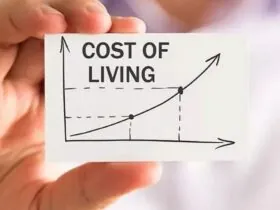In a groundbreaking proposal aimed at addressing financial inequality and supporting youth in building financial stability, the American Dream Accounts Act (ADAA) has been introduced by Representative Dean Phillips. This proposed legislation seeks to offer every American-born or naturalized child a $5,000 fund, set up with the intent of growing into a sizable nest egg by the time they reach adulthood. Here’s an in-depth look at how this act could transform the financial landscape for young Americans and the broader economic implications of such a program.
Key Details of the American Dream Accounts Act
This Article Includes [hide]
The ADAA is designed to address growing economic challenges by providing young Americans a head start in financial planning. This program would allow for an initial $5,000 deposit into an account that grows through compound interest and investment returns. Upon reaching the milestone of high school graduation, a GED, or through disability waivers, these funds would be accessible for major life expenses, such as college tuition, buying a home, or starting a business.
Leveraging Compound Interest for Long-term Benefits
A distinctive aspect of the ADAA is its focus on investment growth. According to Rep. Phillips, the $5,000 principal is projected to yield a 10% annual return, which, thanks to compound interest, would amount to a balance of around $25,000 by the time the child reaches adulthood. This approach not only provides young Americans with a financial foundation but also exposes them to the fundamentals of long-term investment and wealth accumulation.
Financial Literacy: Educating Youth for the Future
In addition to the savings incentive, the ADAA includes an educational component to prepare students for managing and maximizing their assets. The United States Department of Education would ensure that students receive critical financial literacy training, covering topics such as budgeting, investing, and entrepreneurship. A mobile app would be available for students and families to track the progress of their funds, helping them visualize and understand the growth of their investment over time.
Boosting Young Families and Supporting Economic Goals
The ADAA aims not only to strengthen individual savings but also to encourage broader financial stability for families. When two adults who benefited from this program partner together, they could potentially pool their savings to create a substantial starting point for their household. This added financial security could promote family formation, homeownership, and stability for young couples—a significant boost during a period when economic pressures are causing a decline in marriage rates, birth rates, and homeownership.
Costs and Political Considerations
Despite the potential benefits, the ADAA’s cost has raised some concerns. It is estimated that providing $5,000 to each of the approximately 46 million children in the U.S. between the ages of 0 and 11 would cost around $230 billion. Critics, particularly from the Republican party, may argue that this expense is too high, particularly when compared to other federal budget demands. However, supporters point out that the ADAA’s cost is significantly less than the United States’ annual military budget of $820 billion, framing the act as an investment in the nation’s future workforce and economy.
An Investment in American Values
As Rep. Phillips emphasized during the announcement, the ADAA represents an investment in the values of self-determination and opportunity. By offering young Americans a head start, the initiative seeks to provide a tangible pathway to the “American Dream,” potentially leveling the playing field and enabling more individuals to achieve economic stability.
The ADAA stands as a bold proposal that could shape the future of personal finance in the U.S. for young citizens. If passed, it would encourage saving, financial education, and asset-building, supporting young Americans in a transformative way during a critical period of their lives.
Sourced Article By: MARCA and phillips.house.gov







Leave a Reply